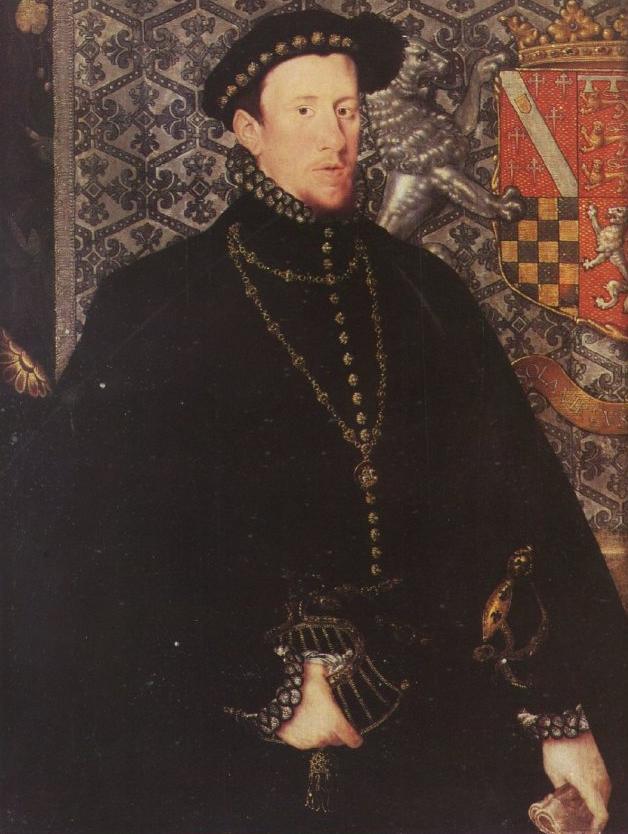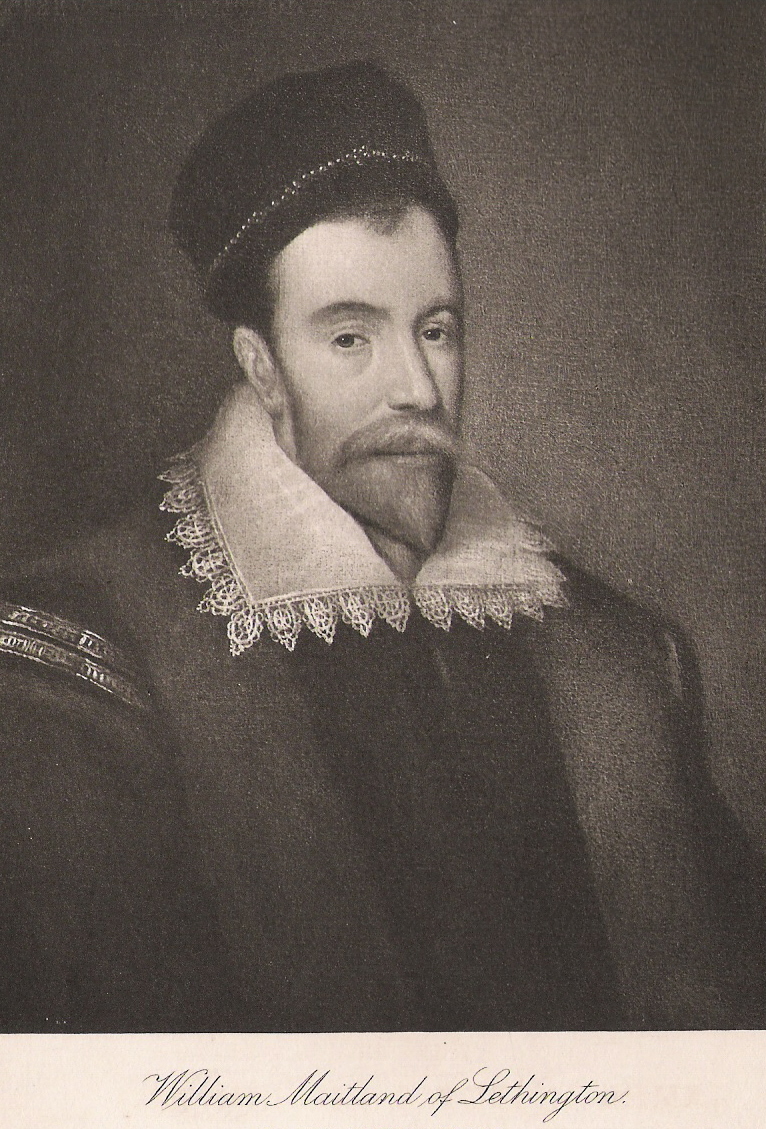 |
| Thomas Howard, Duke of Norfolk |
Norfolk and
his wife had a third child, Margaret born in 1562 and on 19th
December 1563 Margaret had her fourth child, William. A few weeks later on the 10th January 1564
Margaret died after five years of happy marriage, Bishop Parkhurst of Norwich
wrote;
‘The wife of the Duke of
Norfolk died in childbirth on the 10th January and was buried at
Norwich on the 24th of the same month. I preached her funeral
sermon. There were no ceremonies at the funeral, wax candles or torches. Except
the sun nothing shone, which annoyed the papists.’[i]
Thomas was
grief stricken and Bishop Parkhurst was able to dispense with the traditional
ritual of the Catholic Church and substitute Protestant simplicity.
At
Michaelmas 1564 Dudley was made Earl of Leicester. In December Elizabeth
suggested to the young Queen of the Scots that Mary might considering marrying
an English subject. She offered a choice of the Duke of Norfolk, the Earl of
Leicester or Lord Darnley. Mary agreed to marry either Leicester or Darnley as
long as she was named Elizabeth’s heir. The negotiations ceased abruptly.
The
following spring Lord Maitland of Lethington[ii] proposed that Mary marry Norfolk.
When the marriage was proposed to him the newly made widower declined; his wife
was barely cold in her grave.
On 1st
May 1565 Norfolk was a signatory to a letter from the Privy Council to Mary,
advising her against marriage with Darnley;
‘The Queen finding the
intended marriage of Queen Mary with Lord Darnley strange has committed the
same to certain of her council, who with one assent thought it would be unmet
and directly prejudicial to the sincere amity between both the Queens.’[iii]
A New Spouse?
On 17th
October 1566 the Lords and Commons asked the Queen to consider marrying and
name a successor. Elizabeth believed that Norfolk had pressed the peers to this
action, rounding on him at court and calling him a traitor. Whereupon the other
great lords sprang to Norfolk’s defence protesting
‘It was not right to treat
the Duke badly, since he and the others were only doing what was fitting for
the good of the country, and advising what was good for her, and if she did not
think it fit to adopt the advice it was still their duty to offer it.’[iv]
Elizabeth
lashed out at her nobles rejecting the very much unwanted advice.
Elizabeth Leyburne, Duchess of Norfolk
On 29th
January 1567 Norfolk married again. His third wife was Elizabeth Leyburne, the couple married secretly; the queen was only
informed three days beforehand. The new Duchess of Norfolk was Catholic and
brought her chaplain to Kenninghall; the Spanish ambassador believed that she
might convert her new husband to the old religion On 4th September
1567 Elizabeth died in childbirth, the child died too.
Rumours of
Norfolk’s recusancy were spread round court in the November of that year by
supporters of the Earl of Leicester. It was during this period that the vexed
question of the queen’s marriage to the Austrian Archduke Charles was knocked
on the head. Suffering from illness Norfolk spent much of the latter part of
1567 in the country with his children and step-children.
The wardship
of Elizabeth’s children, by her former marriage to her first husband Thomas Dacre, was awarded to her widower. Norfolk
later arranged the marriages of her daughters to his sons. He was now available
to marry again and Norfolk was to be fatally headhunted.
Trouble from Scotland
Henry Darnley
Mary Queen
of Scots married for love the second time and her choice fell on Henry Darnley, Lord Lennox, an Englishman. Mary
was so infatuated with Darnley that she made him King Consort the night before
their marriage on 29th July 1565.
The love
soon disappeared; Darnley was a callow youth and within a month of the marriage
Mary demanded that her courtiers show no favour to her hapless spouse. Only
nineteen Darnley was cast adrift; his arrogance alienated many of Mary’s nobles
as well as his wife.
David Riccio
Mary now
turned to her secretary David Riccio[v], and Darnley felt humiliated. The
young man was easily inveigled into the plot to kill Riccio. Mary was horrified
by the murder, which took place while she pregnant and in her presence. Elizabeth
was kept updated on the events in Edinburgh by her ambassador who wrote to her
‘David, with the consent of
the King, shall have his throat cut within these ten days.’[vi]
Elizabeth
also had forewarning of the plot to kill Darnley[vii].
James Hepburn, Earl of Bothwell
Following
the murder of an ailing Darnley on 10th February 1567 Mary became
dependent on the man who was shortly to become her third husband, the Earl of Bothwell. Bothwell was a key player in the
murder and probably its instigator. He persuaded Mary that all her problems
would be solved by the death of the twenty-one year old king[viii].
Elizabeth
wrote to Mary after the murder
‘Madame, My ears have been
so deafened and my understanding so grieved and my heart so affrighted to hear
the dreadful news of the abominable murder of your mad husband and my killed
cousin that I scarcely have the wits to write about it……..I cannot dissemble
that I am more sorrowful for you than for him.’’[ix]
According to
Mary she was forced to marry Bothwell, after he had kidnapped her on 24th
April and threatened to rape her. Their marriage took place on 15th
May 1567 at Holyrood Palace; Mary having already made Bothwell Duke of Orkney.
The Protestant Lords took to arms against the Queen and her new husband and on
15th June 1567 Mary’s troops were defeated and Bothwell fled, taking
ship from Aberdeen to Shetland[x].
On 24th
July 1567 Mary Queen of Scots abdicated in favour of her son, James[xi]; Mary’s half-brother, the Earl of Moray was made Regent. She was imprisoned in Loch Leven castle,
from which she escaped on 2nd May the following year. Eleven days
later her small force was defeated and she fled to England[xii]. On 18th May
Mary was taken into protective custody by English officials at Carlisle castle.
The Casket Letters Commission
King's Manor, where Norfolk was shown the Casket Letters
On 4th
October 1568 Norfolk arrived in York, to sit as the principal commissioner of a
Commission set up to hear evidence against Mary Queen of Scots, presented by
the Scottish Regent.
Mary was accused of involvement in the murder of Darnley. The principal
evidence provided by the Scots were letters purported to be from Mary to
Bothwell.
Behind the
scenes there had been a lot of bargaining between Elizabeth and Regent Moray,
who was reluctant to let his prize evidence out of his hands until he knew from
the English Queen what the expected outcome of the Commission was to be.
Mary was not
allowed to attend the Commission[xiii], but was allowed
Commissioners to act on her behalf. She vehemently denied writing the casket
letters. Norfolk was watched carefully by both of the Scottish parties, for
signs of favouring the other side. He found the letters repelling and wrote to
Elizabeth
‘The said letters and
ballads do discover such inordinate love between her and Bothwell, her
loathsomeness and abhorring of her husband that was murdered, in such sort as
every good and godly man cannot but detest and abhor the same.’[xiv]
Norfolk was
convinced that, unless the letters could be proved to be forgeries, that Mary
was implicated in the death of her husband.
William Maitland, Lord Lethington
On the 16th
October, Lord Maitland[xv] went hawking with Norfolk
and suggested that one way of the problem was for Norfolk to marry Mary, who
could then be restored to her throne and her children could eventually rule in
Whitehall as well as Holyrood. There was already a clause in the Commissioners’
instructions stating that anyone marrying Mary or advising another to do so;
‘Shall be ipso facto adjudged as traitorous and
shall suffer death.’[xvi]
After a few
weeks one of the English commissioners was summonsed to London and Norfolk set
out on an inspection tour of the northern defences. He was then ordered to
return to London. Elizabeth had been given reason to suspect that Norfolk was
showing partiality towards Mary. The adjourned hearing recommenced at Hampton
Court. At some point Elizabeth asked Norfolk to his face if he wanted to marry
Mary and he denied it.
James Stewart, Earl of Moray
Before the
Scottish Regent left London he had a meeting with Norfolk who suggested that he
should marry Mary and Moray’s daughter should marry King James. This secret conversation was immediately
reported to Elizabeth by Moray himself. By now Norfolk was planning to try and
persuade Elizabeth to agree to the marriage.
Over a
period of time all the various suggestions, that he should consider marrying
Mary, began to have an effect on Norfolk. No doubt he was in part activated by
the preferential treatment given to Leicester by the queen. He was becoming
enmeshed in a web from which he would not escape.
Bibliography
Elizabeth
and Mary – Jane Dunn, Harper Perennial 2003
Walsingham –
Alan Haynes, Sutton Publishing 2004
Elizabeth I
– Anne Somerset, Fontana 1992
Rivals in
Power – ed. David Starkey, Macmillan London Ltd 1990
Mary, Queen
of Scots – Alison Weir, BCA 2003
A Tudor
Tragedy – Neville Williams, Barrie and Rockcliff 1964
www.wikipedia.en
[i]
Rivals in Power - Starkey
[ii]
Mary’s senior adviser
[iii]
A Tudor Tragedy - Williams
[iv]
Elizabeth - Somerset
[v]
Or Rizzio; there were rumours of sexual relations between the two
[vi]
Elizabeth and Mary - Dunn
[vii]
Elizabeth was intensely interested in the affairs of the Scottish court, not
only because Mary was her potential heir, but because she was fully aware of
the potential for a Catholic Scotland to join Spain, France and the Pope in a
league against Protestant England.
[viii]
The extent of Mary’s involvement in the plot is unlikely to be ever proved, but
without doubt she was involved.
[ix]
Elizabeth and Mary - Dunn
[x]
Bothwell was later arrested and held prisoner in Norway, dying in 1568
[xi]
The future James I of England
[xii]
Mary hoped to be allowed to travel to join her family in France, an outcome
that would not be to Elizabeth’s advantage. It never occurred to her that Elizabeth
might place an anointed queen in custody
[xiii]
Elizabeth did not want Mary to plead her innocence before the Commission and in
public. Nor did she want her commissioners swayed by Mary’s appeal and beauty.
It is possible that she did not want Mary personally inspecting the casket
letters and find errors that might undermine the Regent’s case. .This was
certainly an issue that concerned Regent Moray greatly
[xiv]
A Tudor Tragedy - Williams
[xv]
Now one of Regent Moray’s Commissioners
[xvi]
A Tudor Tragedy - Williams







No comments:
Post a Comment
Note: only a member of this blog may post a comment.